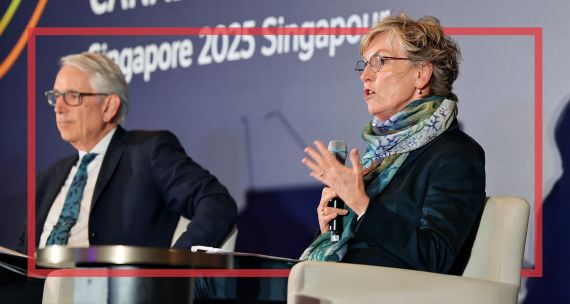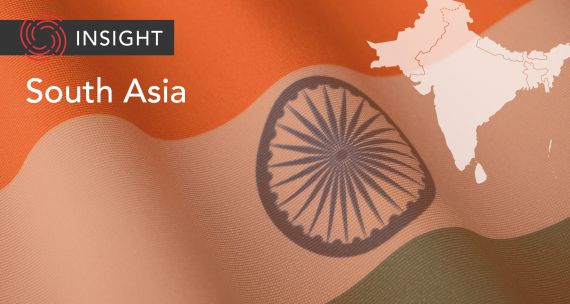The Takeaway
Beijing’s just-launched ‘K visa’ program, designed to attract foreign talent in science and technology, highlights its ambition to position China as a global hub for innovation at a time when the U.S. is tightening restrictions on foreign talent. While the initiative signals openness and aligns with the country’s broader visa reforms, the program’s lack of clarity and public consultation has fuelled criticism, casting doubts on its practical effectiveness. Moreover, skepticism over language barriers and geopolitical tensions suggests China may struggle to balance immigration policies and its tech aspirations in the global competition for talent.
In Brief
- On October 1, China rolled out a new visa program, known as the ‘K visa,’ catered specifically towards attracting foreign talent in science, technology, engineering, and mathematics (STEM) fields. The State Council, China’s cabinet, announced the initiative in August as part of revisions to the country’s exit and entry regulations for foreign nationals.
- Added to China’s 12 existing visa types, the new K visa allows young candidates with outstanding work, research, or educational backgrounds to engage in academic exchanges, establish businesses, or work in China without first securing sponsorship from an employer. The application process is also said to be more streamlined than other Chinese visa applications.
- While the announcement stipulates that applicants “must meet the qualifications and requirements set by relevant Chinese authorities and submit supporting documentation,” many key details regarding educational qualifications, duration of stay, and family sponsorship remain unclear. The announcement also does not offer insights into pathways to permanent residency or citizenship — an unlikely outcome as most Chinese study and work visas do not typically facilitate long-term settlement.
- The K visa announcement marks the latest in a series of Chinese visa reforms aimed at luring more visitors to the country. As of July 2025, China has extended unilateral visa-free entry or mutual visa-exemption policies to citizens of 75 countries (Canada is not yet on the list), with the Chinese National Immigration Administration reporting a 30.2 per cent year-on-year increase in visits to China during the first six months of 2025.
Implications
As Washington imposes more barriers to foreign talent, Beijing is doing the opposite — opening its doors to global capital and expertise. While the initial K visa proclamation in August went largely unnoticed, the program’s launch coincides with recent changes to the U.S.’s H-1B visa program, which many U.S. tech companies have relied on to bring in skilled foreign workers. In September, U.S. President Donald Trump imposed a steep US$100,000 annual fee on new H-1B applications, creating uncertainty for current and prospective H-1B holders and their employers. Analysts note that a potential shift of talent from the U.S. to China would represent a symbolic victory for Beijing at a time when Washington is tightening its tech and talent policies. As many Chinese tech companies rise to global prominence, the K visa category could also create opportunities for those curious about China’s tech sector to ‘test the waters.’
Beijing’s K visa has sparked mixed reactions in China and abroad. While some Chinese netizens welcomed their government’s efforts in attracting high-calibre foreign talent, others worry that lax application requirements for the K visa will bring in a flood of competition from foreigners amid pessimistic job prospects in the Chinese labour market. Anti-immigrant comments, stemming from fears that the K visas could be exploited for fraudulent immigration, were also rife. Chinese state media have tried to assuage public anxieties, emphasizing the availability of jobs in China and the value of welcoming foreign professionals, while the U.S. is closing its doors to STEM talent. China must, argues an official mouthpiece commentary, make this strategic move to foster the country’s own innovation-driven growth and global prominence. The commentary also cites Canada’s policy for attracting skilled talent as an example of staying on top of the worldwide race for talent.
Contrary to domestic backlash, China’s newest visa scheme is drawing interest from overseas, as early-career STEM professionals from regions including Southeast Asia, India (which constituted 70 per cent of U.S. H-1B visa recipients), Europe, and the U.S. explore alternatives. Others remain hesitant, debating whether the Chinese K visa could offer the same benefits as the H-1B program, given how few foreign nationals in China are granted permanent status, compared to the roughly 1 million new green cards issued in the U.S. every year. Mandarin’s dominance as the primary working language and differences in work culture are among the other factors that could deter many from moving to China.
What’s Next
1. Still a work in progress
While the program is now technically open for applications, it is still short on many practical details, making it difficult for candidates to assess their eligibility or prepare their applications. The proclamation, for instance, did not specify what it means by a “specific age bar,” with interpretations assuming an 18–45 age range. More concrete implementation guidelines, along with building domestic consensus while mitigating the potential impact on the local workforce, will be essential for the scheme’s credibility.
2. Actual interest in China remains in doubt
Aside from potential day-to-day hurdles living and working in China, a larger question arises around whether the country, with its historically restrictive immigration policies and low rate of immigration, is genuinely prepared to accommodate a significant influx of foreign talent. Furthermore, China’s appeal as a top destination for international talent, including Canadians, may also be limited by its different political and organizational cultures, especially at a time of growing geopolitical tensions with some of its neighbouring countries and the West.
• Edited by Maya Liu, Program Manager, China, Vina Nadjibulla, Vice-President Research & Strategy, and Ted Fraser, Senior Editor, APF Canada.






